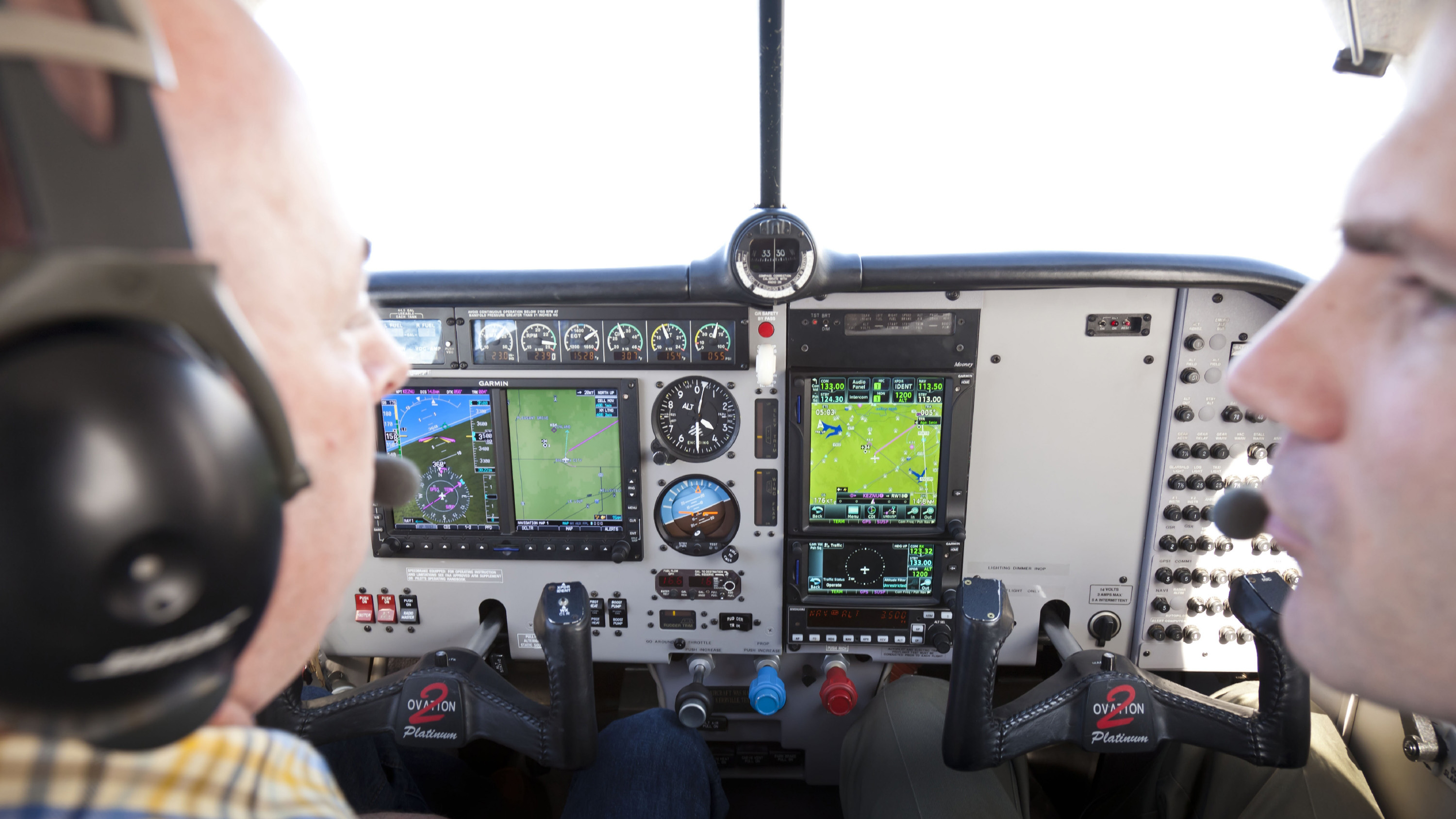

With so much data packed into one location, the pilot’s overall scan is, in fact, considerably easier than in a traditional steam-gauge aircraft. The beauty of glass is a number of useful new tools-such as trend information-accessible for almost no additional scanning effort. The focal point of any glass airplane is the PFD that mimics elements of the basic “T” configuration every pilot has come to rely on. Although the depth of features is somewhat less on smaller training airplanes, today’s Avidyne- and Garmin-equipped Cessnas, Diamonds, Pipers, Hawker Beechcraft, and Cirrus offer options that rival those found on the CJ3.

Glass cockpit pro#
With the Rockwell Collins Pro Line 21 system as a guide, here’s what a typical business aviation pilot needs to understand about the display before hopping into the left seat of a Cessna Citation CJ3. Flight training is still, for the most part, trying to catch up with the glass-panel technology.Ĭollins FMS 3000 in the cockpit of a Citation CJ3. The downside, however, was that more of the accidents that did occur resulted in fatalities. The good news, of course, is that in sheer numbers, glass-cockpit aircraft were involved in fewer total accidents than some had predicted. “There is little in the way of added safety benefit -yet,” the report said. Glass was labeled early on as certain to improve safety, and a 2011 NTSB report took a close look at how glass altered the general aviation landscape. Quite a few gray-haired airline pilots stumbled during the transition to glass, and a few never successfully completed the transition. Some thought too many colored, moving icons were simply overwhelming, despite the claims of improved safety.

A bonus feature is the color and animation options computers offered over traditional black-and-white mechanical displays.īeing human, of course, not all pilots enjoyed these changes. Final approach guidance is now displayed just beneath the attitude indicator, demanding that pilots somewhat alter the decades-old system of scanning the panel. Airspeed, for instance, was now displayed as a moving vertical tape to the left of the attitude indicator altitude on a tape to the right and vertical speed to the right of altitude information. For starters, glass generated a revolutionary new standard to the old “T” instrument layout. Looking at glass cockpits as simply computer-generated versions of steam gauges, however, seriously sells these marvelous tools short. In later aircraft, engine instrumentation also appeared on the MFD as the navigation morphed into the flight management system (FMS). All were replaced with computer-generated representations of systems that more tightly integrated data onto a single screen, now labeled a primary flight display (PFD), and a multifunction display (MFD) to graphically present navigation data. Gone were many of the mechanical gauges everyone had once depended upon for attitude, speed, altitude, and navigation cues. When the 757 made its first flight in 1982, flight crews were amazed-some would say overwhelmed-by both the volume and the then-unique fashion in which information was presented. But glass has been standard equipment for decades on transport-category airplanes such as the Boeing 757/767 series, MD–80s, and some early Airbus models.
Glass cockpit windows#
Glass Cockpits: Moving Targets Now invading GA.ĭespite the fact that everyone talks about glass-cockpit airplanes today as if they are as common as power windows on a new car, glass-panel displays are actually relatively new to general aviation, on the scene within the past decade or so.Turbine Market Shows Mixed Signals Light turbine market continues to struggle.Trouble for Throttle Jockeys Easy does it when settling takeoff power.Mentoring Matters: FARs for Jets Regulations that apply to operating jets.For Pax Sake Practical tips to make the flight more comfortable for your passengers.Flying a 'Real' Jet Making like Maverick in an L-39.Special section for the turbine inclined.


 0 kommentar(er)
0 kommentar(er)
